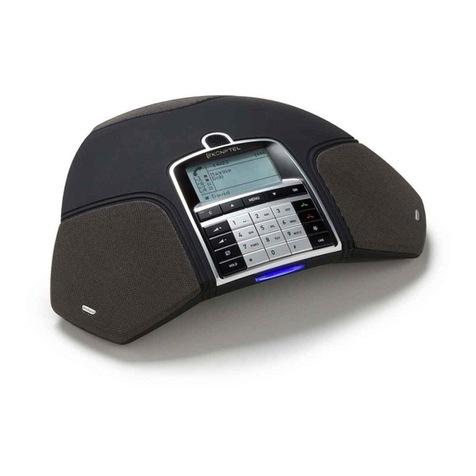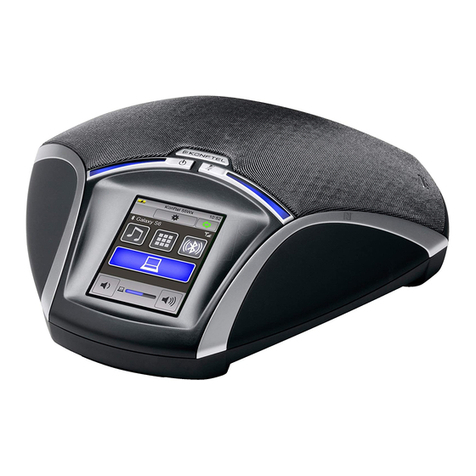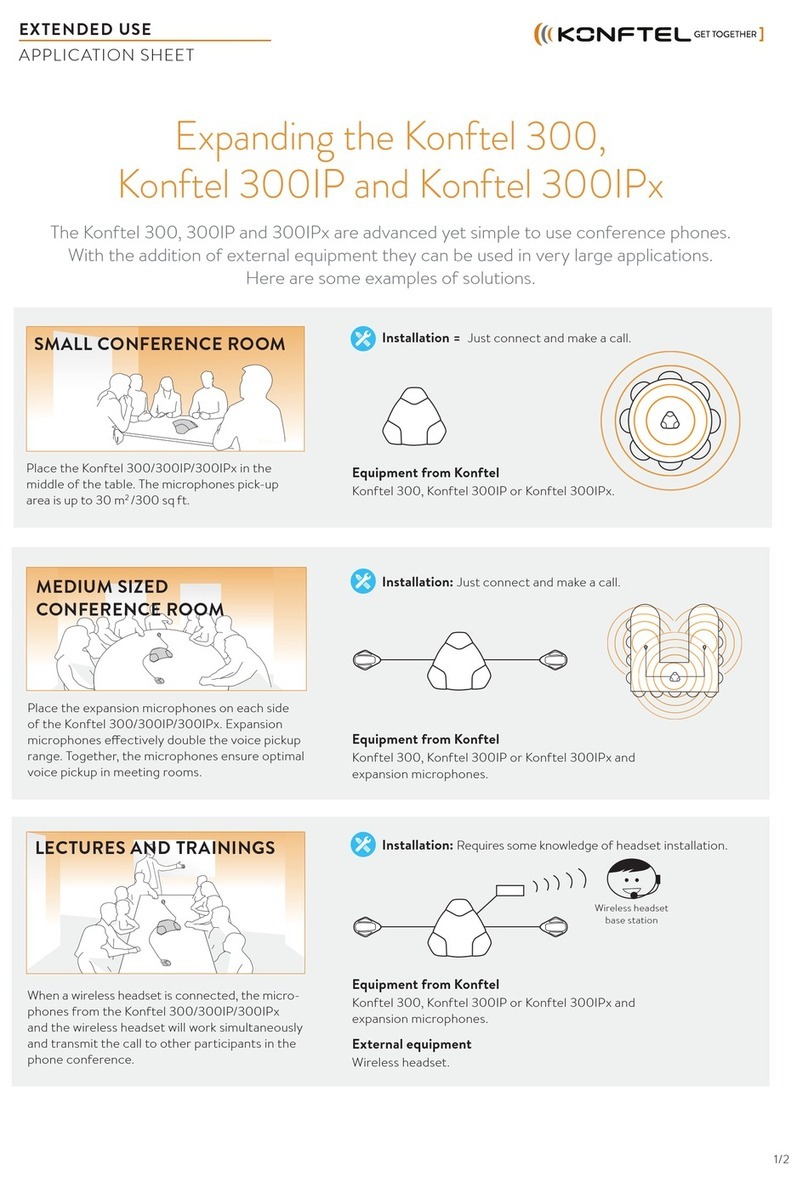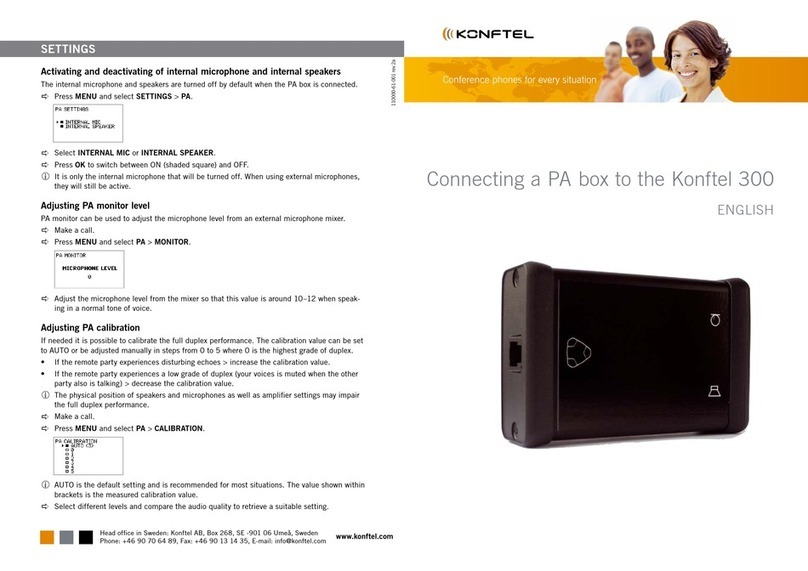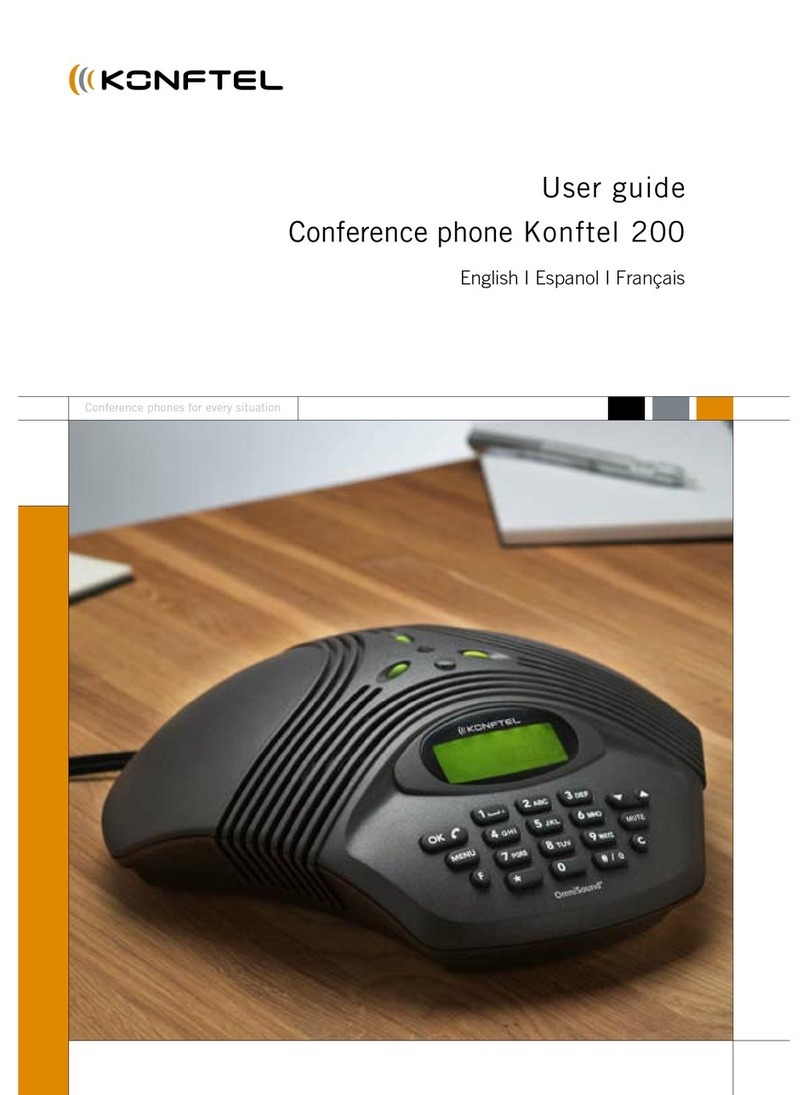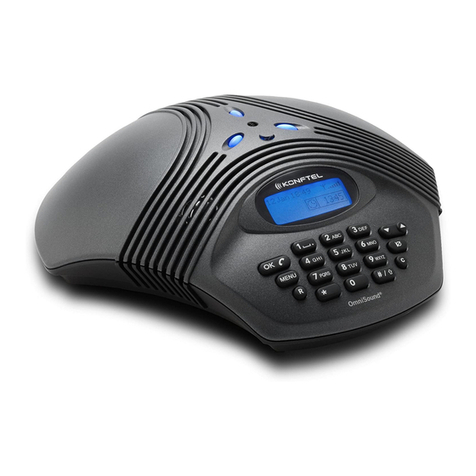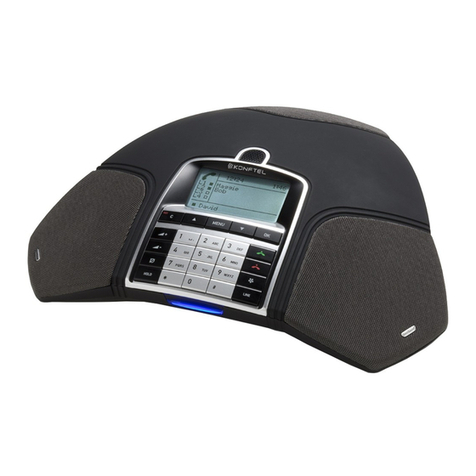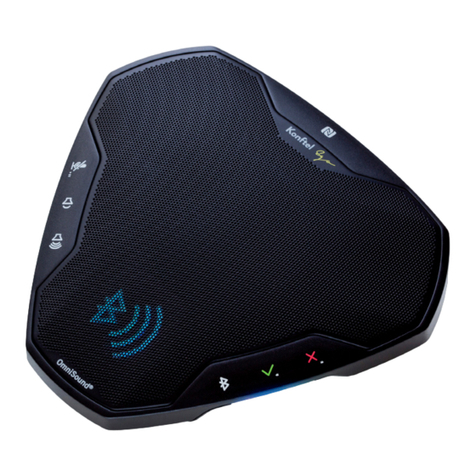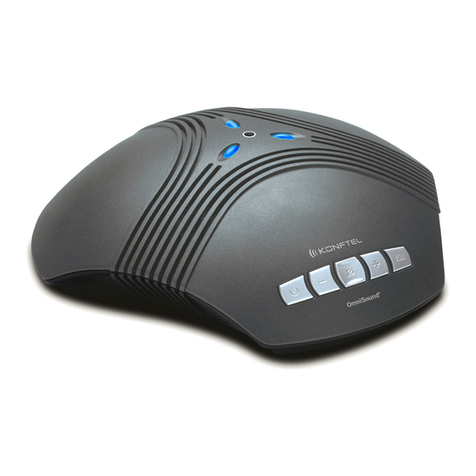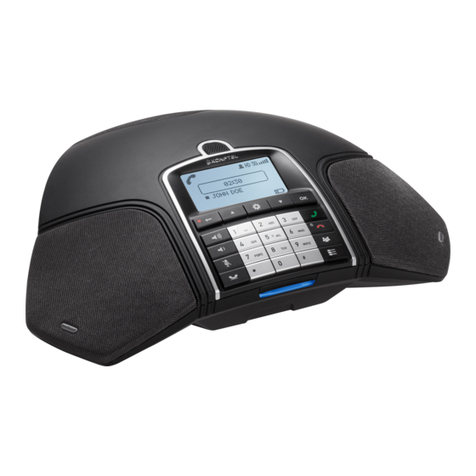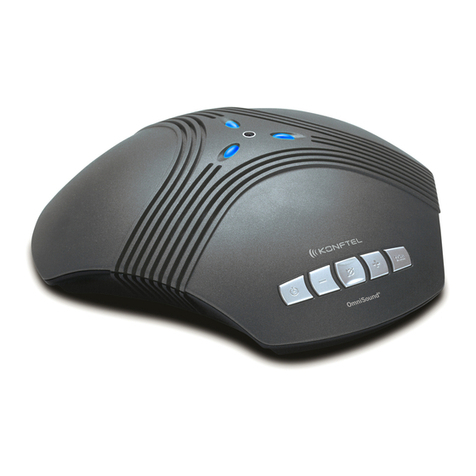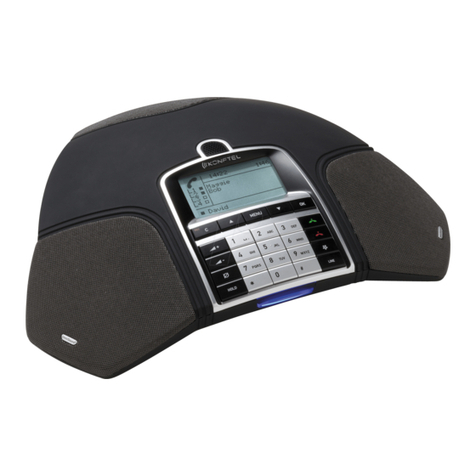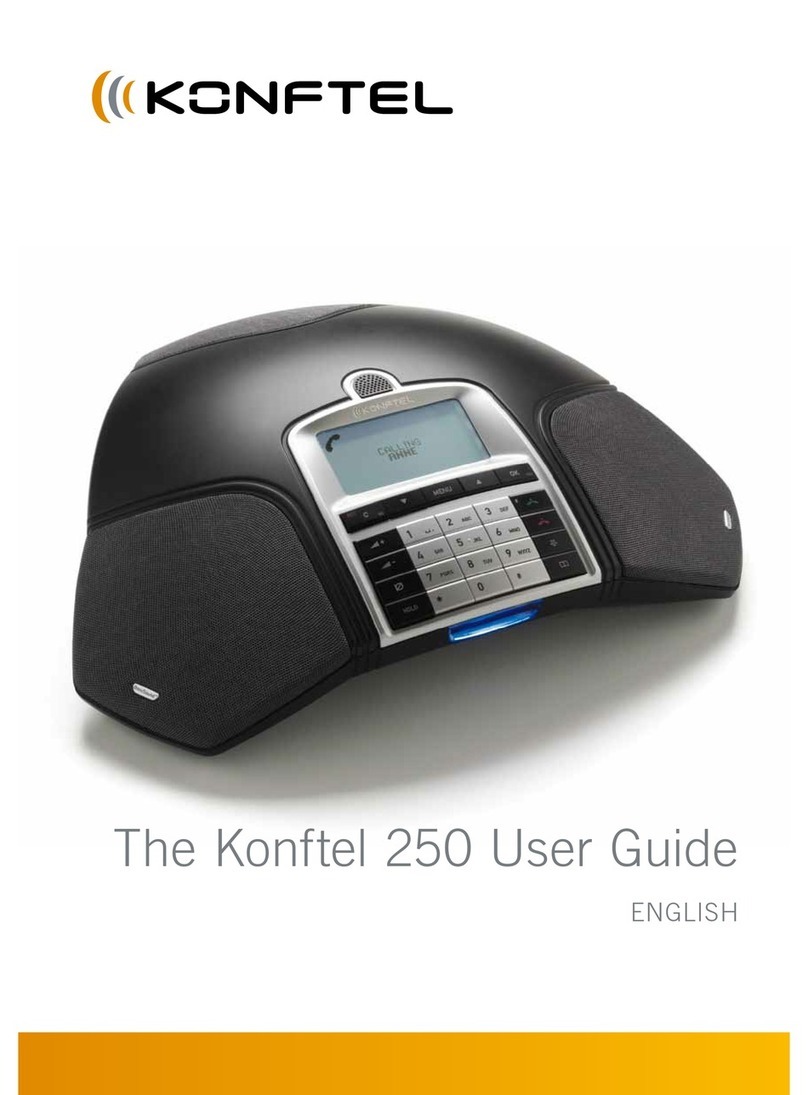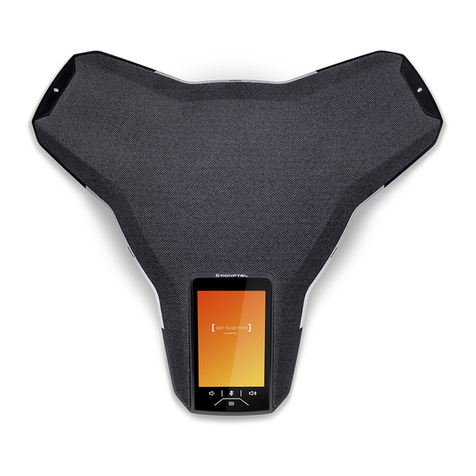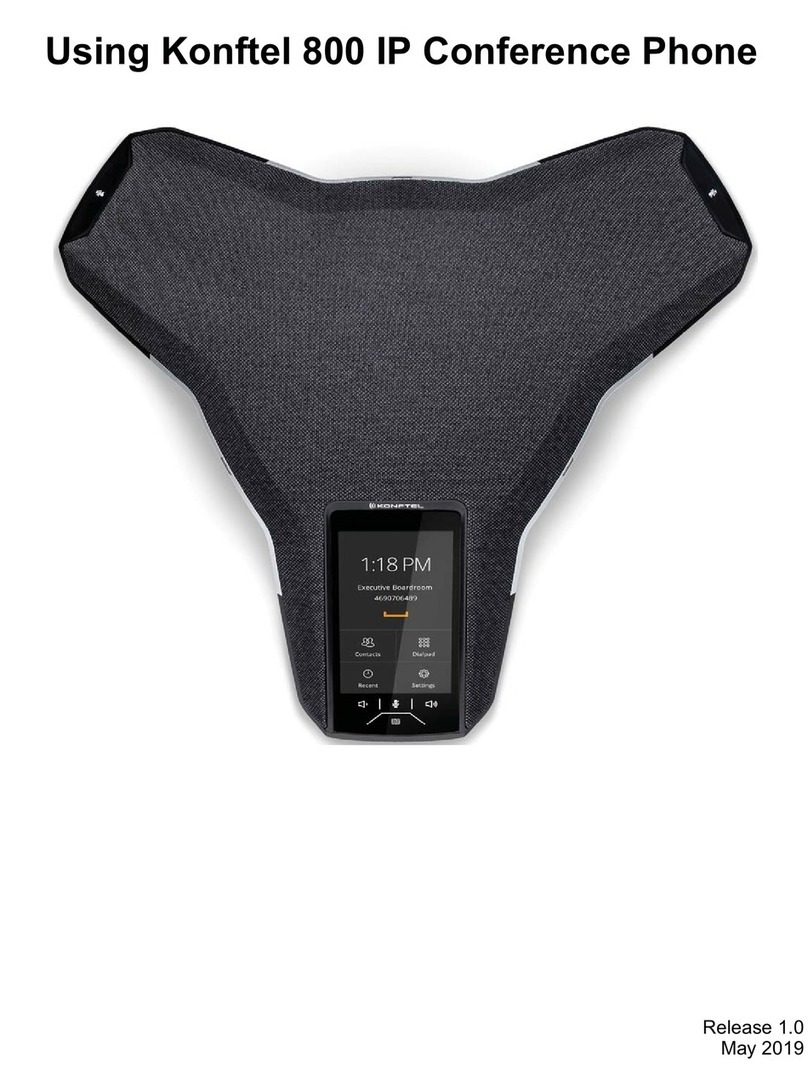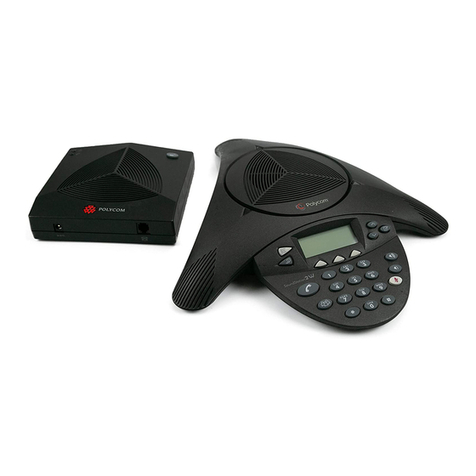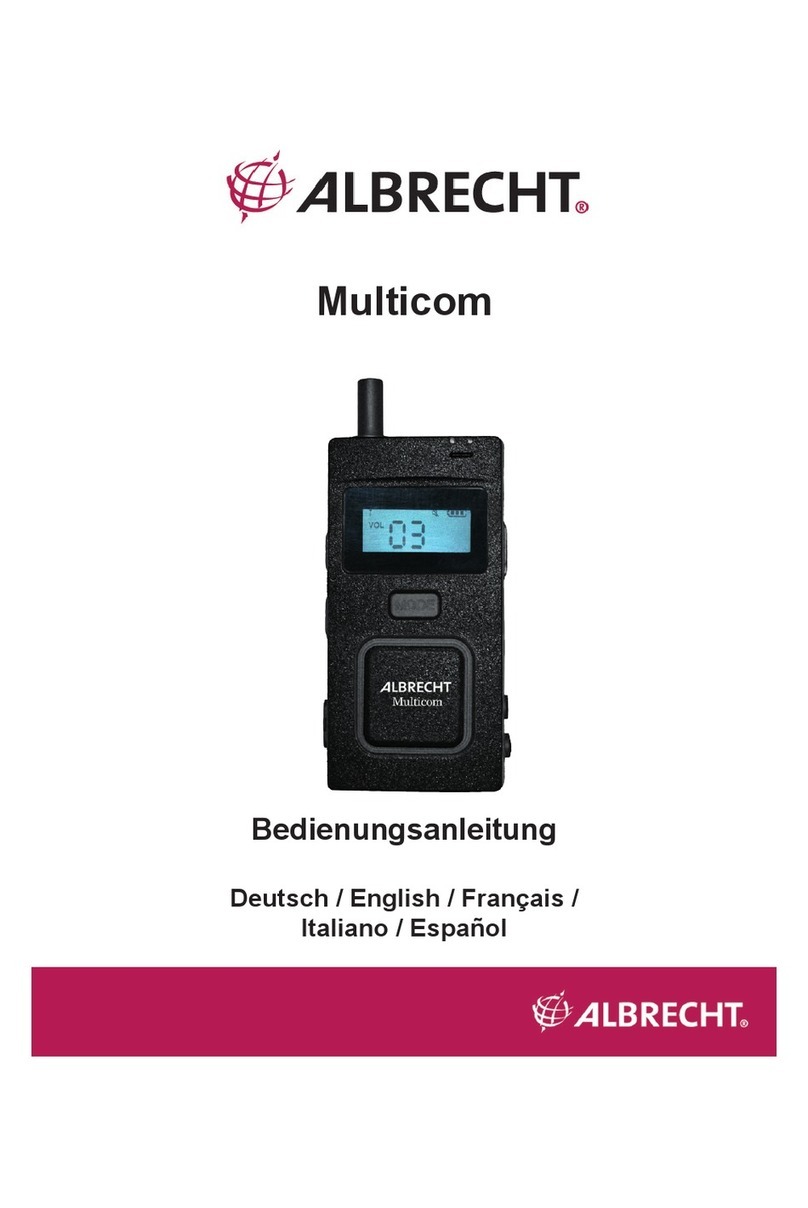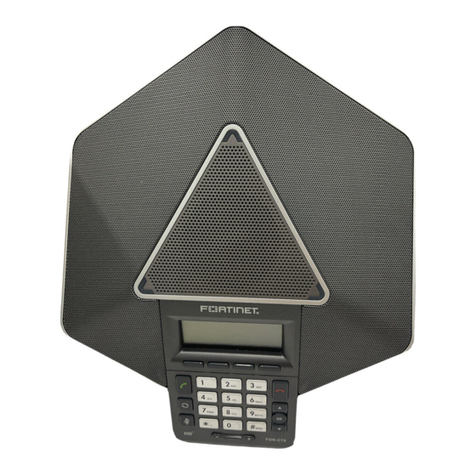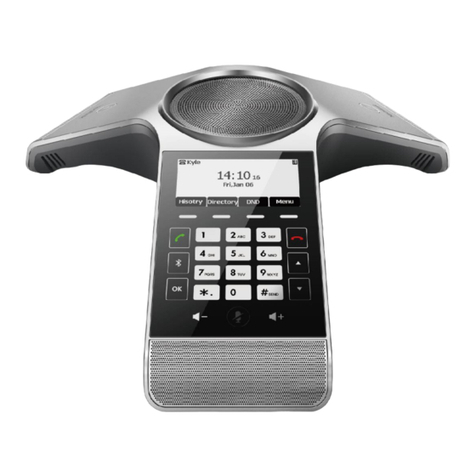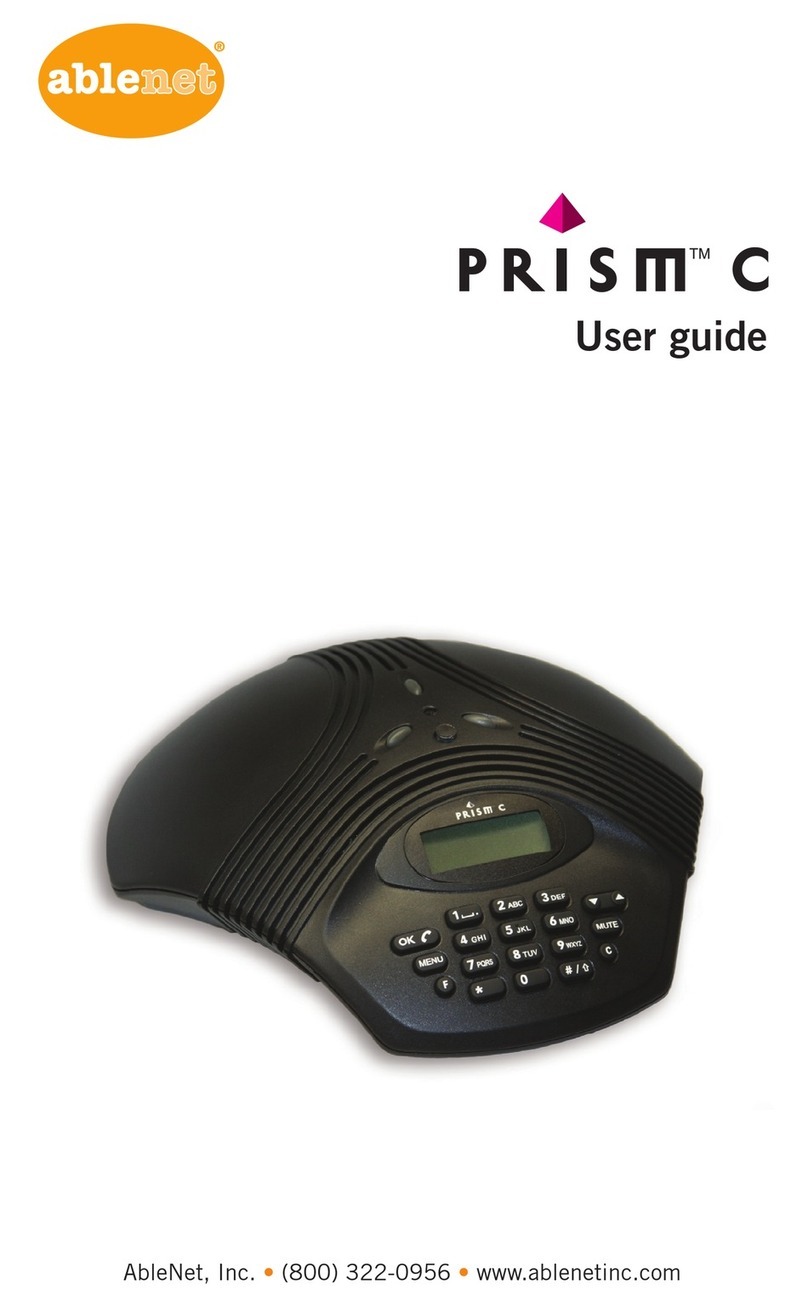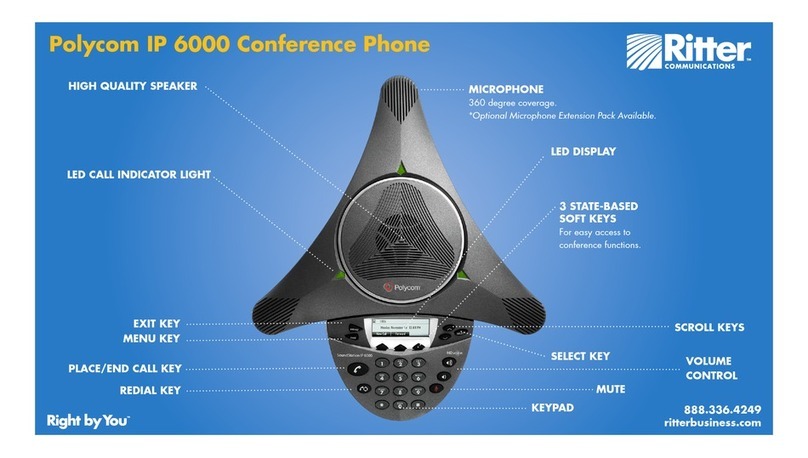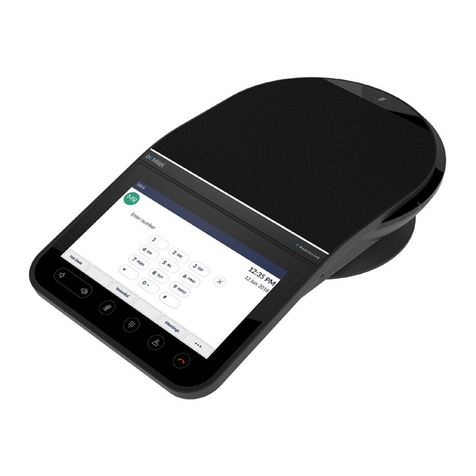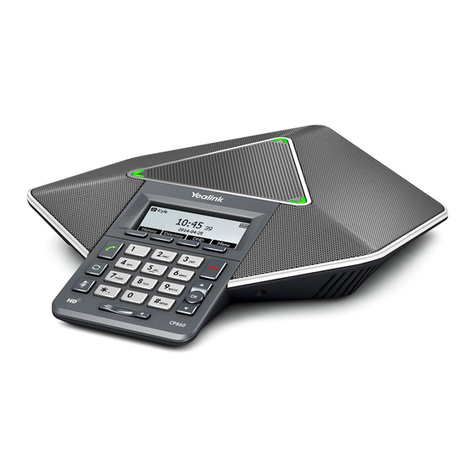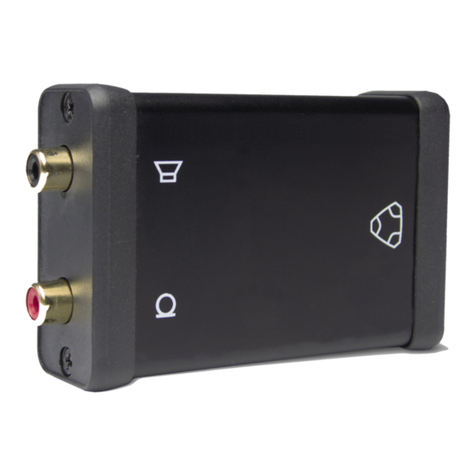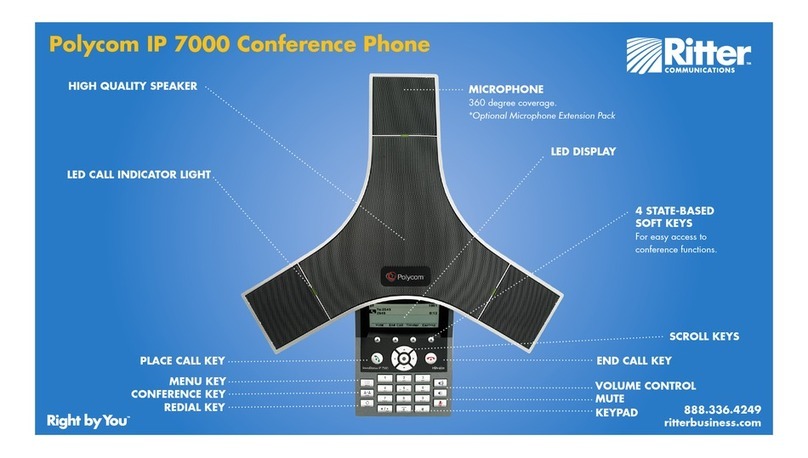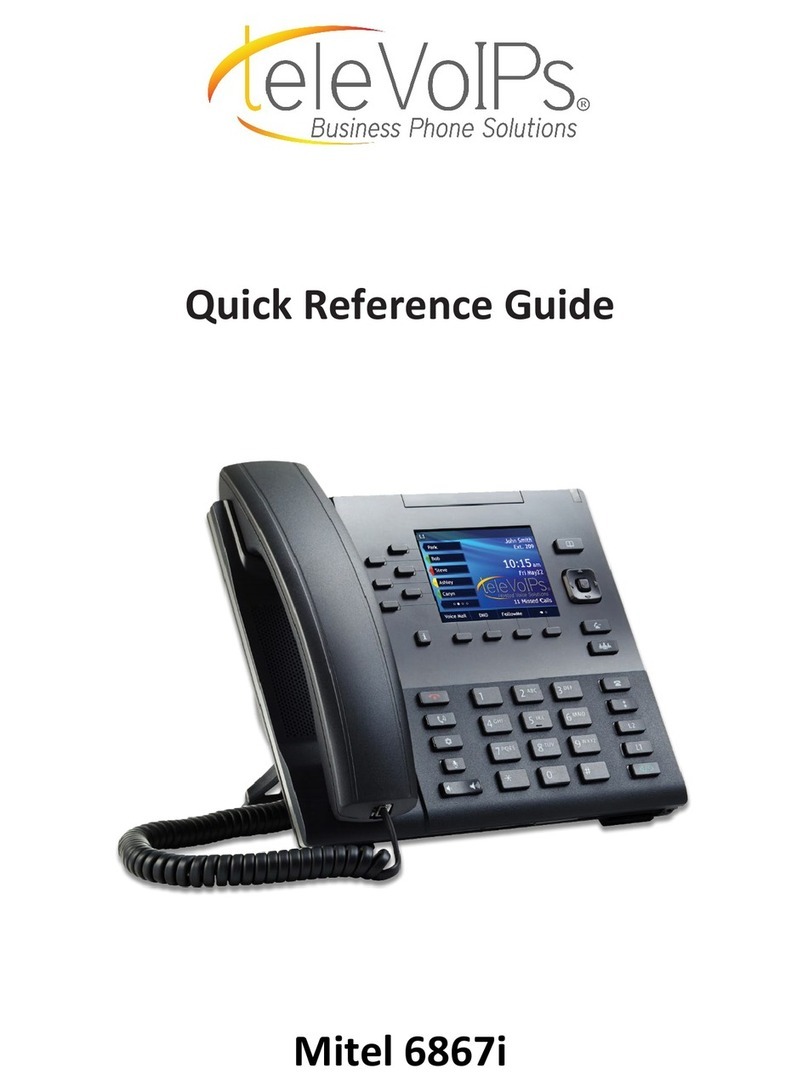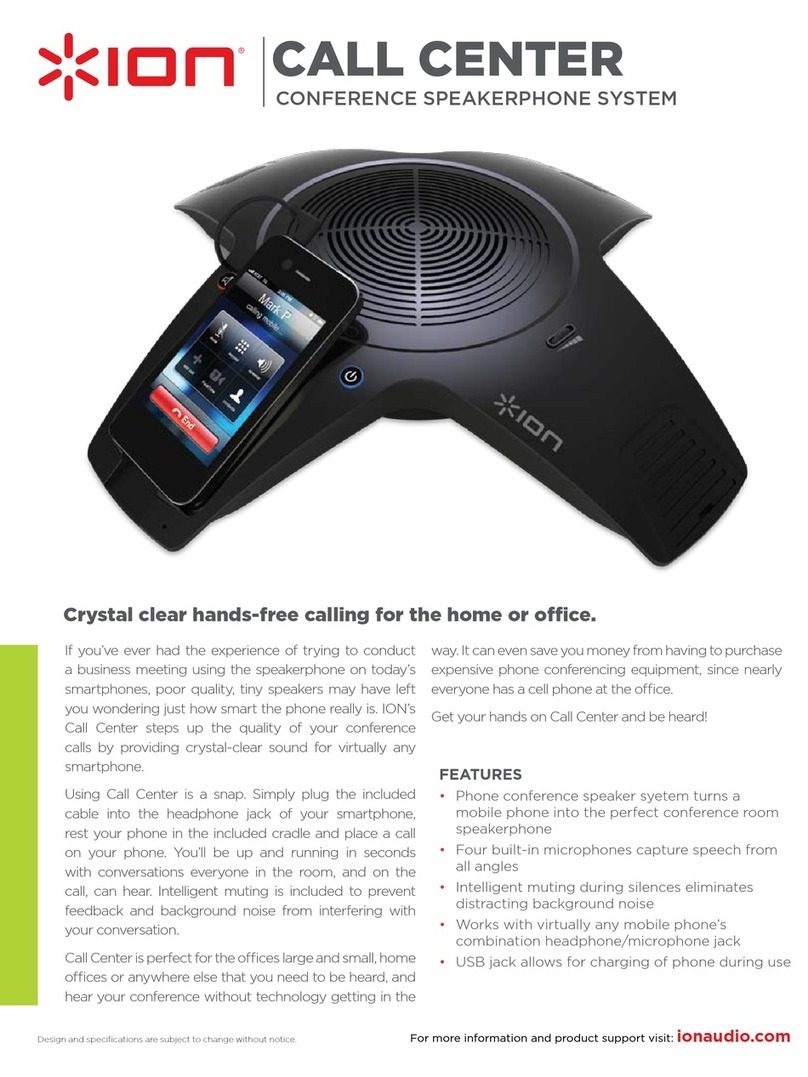Almost all settings can be done directly on Konftel 300IP. See “NAVIGATING THE
MENUS AND MAKE SETTINGS” on page 5 for using the menu system. Because it is
easier to use the web interface, we describe the settings using this interface.
For safety reasons, recordings can only be managed directly on the Konftel 300IP. All
other settings can be changed via the web interface. The web interface also allows you
to import and export contacts and conference groups, rename user proles and change
PIN codes. As an administrator, you can also study logs, upgrade the software en create
an XML based conguration le for easier management of a set of phones.
LOGIN
See “USING THE WEB INTERFACE” on page 6 for a description of how to log in to the
web server in Konftel 300IP.
BASIC
Select Settings > Basic.
SETTINGS
These settings affect the Admin and Default proles. To change the basic settings of a
user prole, you need to log in with that prole.
Proles – edit name and PIN
PIN code can be changed from the default setting to protect the settings.
Select Settings > Basic and click the Edit button on the account you want to
change.
Enter a new PIN code.
The PIN code may consist of 8 digits.
You can also choose to change the name of a user prole.
Click on the Set and Save buttons.
Make a note of the new PIN code and keep it in a safe place.
The administrator’s PIN code can only be reset with a complete reset to factory
settings!
Default account
This setting determines which account to be used as default. By pressing LINE before
dialing a number, you can choose the alternative account for the call.
Select Account 1 or Account 2 and click on the Save button.
On phone: MENU > SETTINGS > BASIC > ACCOUNT (5,1,1).
Language
Select language using the list box and click on the Save button.
On phone: MENU > SETTINGS > BASIC > LANGUAGE (5,1,2).
Ring level
There are six volume levels plus a silent mode. You will hear the ring tone for each level
you select. If you select silent mode, only the blue LEDs on the phone ashes when an
incoming call is received.
Select level using the list box and click on the Save button.
On phone: MENU > SETTINGS > BASIC > RING LEVEL (5,1,4).
Key tone
You can select whether or not you want a tone to be heard when you press a button.
Select On or Off and click on the Save button.
On phone: MENU > SETTINGS > BASIC > KEY TONE (5,1,3).
SETTINGS



